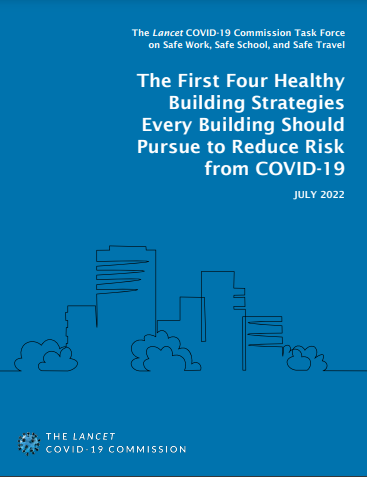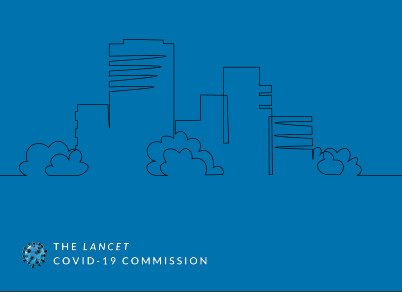Site Editor:
Joaquim Cardoso MSc.
Health Institute — for continuous health transformation
October 4, 2022
Harvard T.H.Chan School of Public Health
July 20, 2022
A short new report from the Lancet COVID-19 Commission lists the first four strategies that every building owner and operator should pursue to reduce the risk of COVID-19 transmission.
The report focuses on lowering the amount of virus-laden aerosols in indoor air by improving ventilation and filtration.
The report was put together by the Commission’s task force on safe work, safe school, and safe travel, chaired by Joseph Allen, associate professor of exposure assessment science and director of the Healthy Buildings program at Harvard T.H. Chan School of Public Health.
The report recommends:
- Verify that building systems — including heating, ventilation, and air conditioning — are performing as intended.
- Maximize the amount of outdoor air that comes into buildings, either through the HVAC system or open windows.
- Upgrade air filters to those with ratings of MERV 13 or higher (“MERV” stands for “minimum efficiency reporting value”).
- Supplement with portable air cleaners where needed.
Read the full report: The First Four Healthy Building Strategies Every Building Should Pursue to Reduce Risk from COVID-19
Learn more
Joe Allen’s focus on clean indoor air (Harvard Chan School news)
ORIGINAL PUBLICATION

Introduction
Understanding of the most probable transmission routes and identifying the risk environments for disease spread should always be among the first critical steps in the response to future disease threats.
This is one of the most vital public health lessons of the COVID-19 pandemic: with a well-informed understanding of the dominant mode(s) of transmission of an infectious disease, effective control strategies can quickly be specified, higher risk activities and environments can be defined, and public health leaders may then set the course for a response that aims to efficiently and rapidly mitigate widespread transmission.
Laboratory, field, modeling, and case studies have demonstrated that airborne transmission via inhalation of virus-laden aerosols is important, if not dominant, for COVID-19.1,2,3,4,5,6,7,8
Aerosols are small respiratory particles that are suspended in the air and can be carried on air currents over long distances.9
They are released into the air during normal respiratory activities.
Aerosols produced by infected individuals may contain pathogens and can be inhaled by others to cause new infection; when this occurs, it is known as airborne transmission.
This can occur in both the near-field (within the vicinity of the infection source) and far-field (greater distance away from the infection source).
To combat the risk of airborne transmission of COVID-19, control strategies that reduce the concentration of (and therefore, the likelihood of inhaling) potentially infectious respiratory aerosols must be implemented.
Increased outdoor air ventilation to dilute aerosols and reduce their concentration and/or enhanced filtration efficiency to remove particles from recirculated air have been shown to be effective as part of an overall strategy to reduce risk.
These strategies should be prioritized in occupied environments in which aerosols accumulate most rapidly: indoor spaces with low outdoor air ventilation and/or low levels of (or no) filtration.10,11,12,13
Despite significant progress across other elements of pandemic response — including vaccines and boosters, rapid tests, treatments, and expanded access to high efficiency masks — ventilation and filtration have remained insufficiently addressed, even more than two years into the pandemic.
This has finally shifted following the March 2022 Biden-Harris Administration launch of the Clean Air in Buildings Challenge, a key component of the National COVID-19 Preparedness Plan.
This initiative calls on all building owners and operators across the domains of school, work, and travel to adopt key strategies to improve indoor air quality in their buildings and reduce the spread of COVID-19.14
The Administration’s announcement quickly elevated the discussion around the importance of indoor air quality and advanced a new framework for recognizing and rewarding science-based efforts in buildings that promote health and safety and improve resilience to future pandemics.
In light of the announcement of this new recognition system for buildings, experts from the Lancet COVID-19 Commission’s Task Force on Safe School, Safe Work, and Safe Travel have identified the following four key actions that represent the most effective, fundamental steps toward promoting healthier indoor environments and reducing the risk of airborne infectious disease transmission indoors.
Names mentioned
Joseph Allen, associate professor of exposure assessment science and director of the Healthy Buildings program at Harvard T.H. Chan School of Public Health.








